Everyone talks about the results, the thick hairlines, the full crowns, the confidence that comes back. But before any of that happens, there’s always the same question: “How many grafts do I actually need?”
It sounds straightforward, but it’s not. One guy online says 2,000 grafts. Another claims he got 5,000. Same photos, totally different stories. The truth? There’s no magic number. Your ideal graft count depends on your scalp size, your donor strength, your hair thickness, and your long-term plan, not just how bald you look right now.
According to the International Society of Hair Restoration Surgery (ISHRS), safe planning begins with three things: measuring the recipient area (in cm²), setting a realistic target density, and respecting donor capacity limits (usually around 4,000–6,500 grafts in a lifetime). Anything beyond that risks overharvesting and future regret.
In this guide, we’ll unpack the science, the math, and the art behind graft numbers, how hair transplant clinics calculate them, what changes your total, and how to make sure your results look natural not just next year, but ten years from now.
At a Glance: How Many Hair Grafts
When it comes to graft numbers, there’s no one-size-fits-all answer, only math, biology, and good judgment. Here’s what actually matters:
- Most full restorations need 3,000–4,500 grafts. But every scalp tells its own story.
- One graft = 1–4 hairs. Your total hair count will always be higher than the graft number.
- Safe donor extraction matters most. Never exceed 10–15 grafts/cm² or 40% lifetime harvest.
- Density has limits. Above 60 grafts/cm², blood supply drops and grafts may not survive.
- Planning beats promises. Norwood and Ludwig patterns help predict future loss.
- Technique doesn’t define longevity — precision does.
- Maintenance is essential. Medications, PRP, and scalp health keep native hair alive around the transplant.
- Touch-ups are normal. Small sessions every 5–8 years keep things looking consistent.
How many hair grafts do you need for a full hair transplant?
If you’re wondering how many hair grafts you’ll need, here’s the straight truth: most full scalp restorations fall in the ballpark of 3,000 to 4,500 grafts, but the right number for you depends on three things: how much area needs coverage (recipient size in cm²), how dense you want it (grafts per cm²), and how much donor hair you actually have.
According to guidelines from the ISHRS, safe donor area estimation is important and you’ll often see limits like “10-15 grafts per cm² from the donor zone” to avoid overharvesting. So yes, 3,000+ grafts might sound big, and it is but you’ll get a clear number once you overlay your hair loss pattern, your donor supply, and your future goals.
Grafts 101: What You’re Actually Counting
Before you get hung up on big numbers, it helps to understand what a “graft” really is and how it translates into what you’ll see in the mirror.
What is a graft?
A graft is a follicular unit, a natural cluster of hair follicles that grow together, typically 1 to 4 hairs per unit. According to the Bernstein Medical site, in the first session they provide a guideline using Norwood classes: e.g., Norwood Class IV might need 1,600-2,200 grafts in the first session.
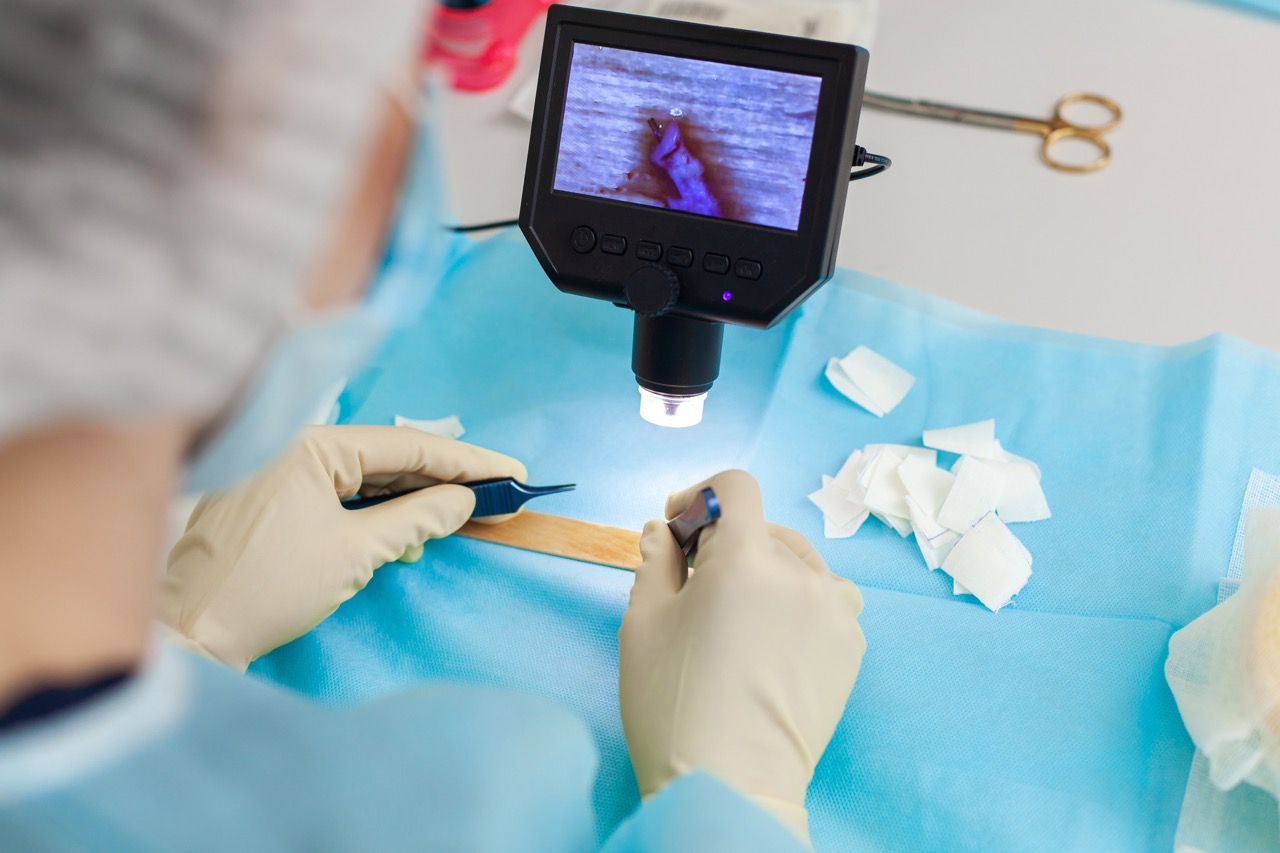
When you hear “3,000 grafts”, you’re talking about roughly 3,000 of these units so if many units contain 3 hairs each, your real hair count might be circa 9,000 hairs. Big difference in perception.
Why graft count important, but isn’t everything
A few key factors change how many grafts you should use:
- Coverage vs density: If your scalp shows when you run your hand through your hair, you might need 30-40 grafts per cm² for a natural look, not about full “normal” density.
- Hair calibre & curl: Coarse, curly hair covers more ground with fewer grafts. Fine, straight hair requires more grafts for the same appearance.
- Hair-to-skin contrast: A pale scalp with dark hair shows more baldness faster, so you may need more grafts.
- Donor supply & future planning: ISHRS guidelines note that you shouldn’t harvest donor zones too aggressively, safe excision densities of 10-15 grafts/cm² are recommended so the donor area doesn’t look thin.
The logic behind estimating
- Step 1: Measure the area that needs grafts (in cm²).
- Step 2: Choose a target density (e.g., 30 grafts/cm²) based on your hair type and budget.
- Step 3: Calculate grafts = area × density. For example: 100 cm² × 30 = 3,000 grafts.
- Step 4: Check your donor area: how many grafts can safely be extracted without causing visible thinning. According to several sources, the average donor capacity is somewhere around 4,000–6,000 grafts in a healthy person—though this varies a lot.
Example: If you have a Norwood 4 pattern (frontal + crown loss) covering ~150 cm², and you choose 30 grafts/cm² → you’d need ~4,500 grafts. But if your donor supply only allows extraction of ~3,500 grafts safely, your plan may need to either reduce area, reduce density, or stage over two surgeries.
The Math: From Area to Graft Count
Here’s the truth: graft planning isn’t guesswork, it’s math mixed with artistry. Most surgeons don’t “eyeball” it. They measure the area of loss (in square centimeters), estimate how much coverage you want, and calculate grafts accordingly.
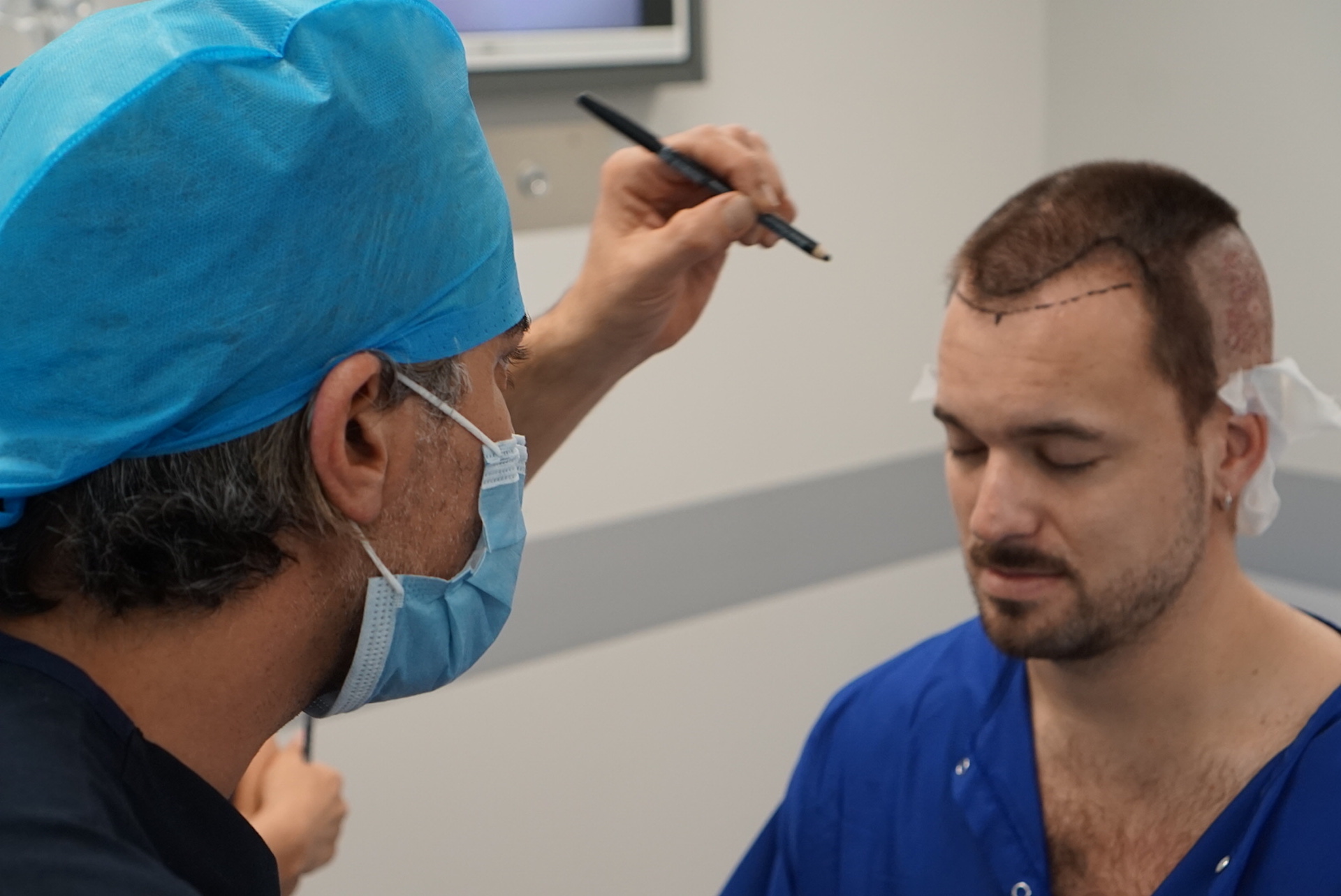
According to the International Society of Hair Restoration Surgery (ISHRS, 2024), a natural-looking result usually sits around 30–40 grafts per cm², while younger patients or those seeking fuller density may go up to 45–50 grafts/cm², but exceeding 60 grafts/cm² risks blood flow issues and graft loss.
Let’s break it down simply.
Step 1: Measure the Area That Needs Coverage
Use a mirror or your surgeon’s trichoscopy software.
- Receding hairline ≈ 30 cm²
- Crown ≈ 60–80 cm²
- Mid-scalp ≈ 40–50 cm²
- Full top ≈ 120–150 cm²
Step 2: Pick a Realistic Density Target
Natural density in most people is 70–100 grafts/cm², but transplants don’t recreate that they create visual coverage.
- Moderate, natural look: 30–35 grafts/cm²
- Dense cosmetic fill: 40–45 grafts/cm²
- High-risk (requires careful vascular planning): 50–60 grafts/cm²
Step 3: Do the Math
Formula: Area (cm²) × Target Density (grafts/cm²) = Total Grafts Needed
Example 1: Hairline & Temples
- Area: 30 cm²
- Density: 35 grafts/cm² → 30 × 35 = 1,050 grafts
Example 2: Mid-Scalp & Crown
- Area: 80 cm²
- Density: 30 grafts/cm² → 80 × 30 = 2,400 grafts
Example 3: Full Restoration (Norwood 5–6)
- Combined area: 130 cm²
- Density: 35 grafts/cm² → 130 × 35 = 4,550 grafts
This is why most “full” transplants land between 3,000 and 4,500 grafts, enough to balance coverage and natural density while staying within safe donor capacity.
Step 4: Respect the Donor Bank
According to ISHRS and Bernstein Medical, the donor area (back and sides) safely contains 4,000–6,500 grafts total, though only 40–50 % should ever be extracted in a lifetime to prevent visible thinning.
In other words, you can’t just “buy” 7,000 grafts because a clinic offers it. Biology sets the limit.
Dr. Ahmet Murat (Hermest Hair Clinic):
“We measure donor density like engineers. If the numbers don’t add up, no tool or hype can change them.”
Area-By-Area Ranges (What Clinics Commonly Use)
Every region of the scalp has its own rhythm. Some zones like the hairline demand surgical precision; others like the crown simply crave coverage. The number of grafts you’ll need depends on the area’s size and its visibility.
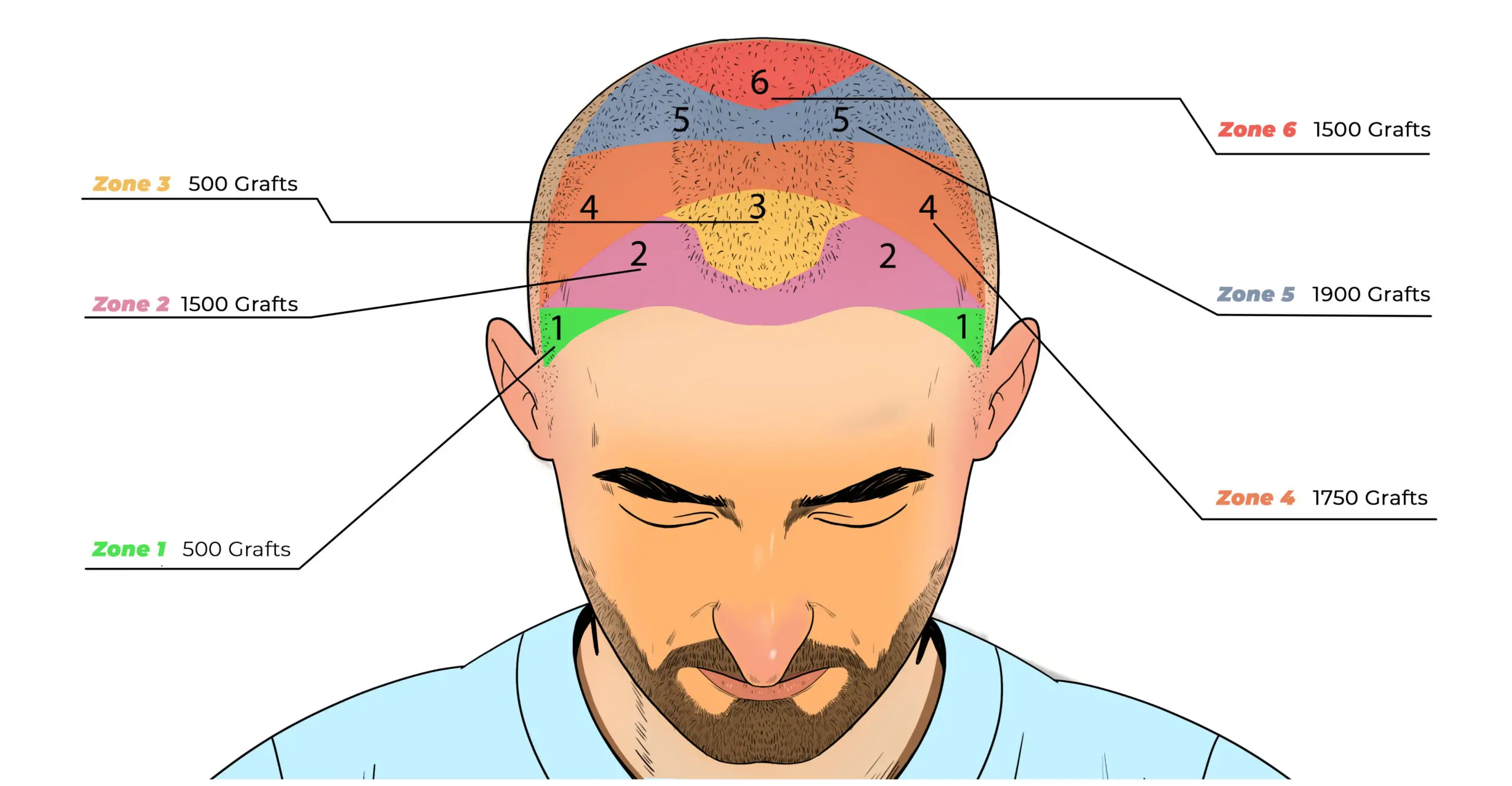
Average full-coverage transplants fall between 3,000 – 4,500 grafts, but breaking it down zone-by-zone reveals how those grafts are actually distributed.
Hairline
The front frame of your face. It doesn’t need brute-force density, just softness and symmetry.
- Typical range: 500 – 1,500 grafts
- Density target: 30 – 40 grafts/cm²
- Technique: usually DHI or Sapphire FUE for precision control
Dr. Ahmet Murat (Hermest Hair Clinic):
“The hairline isn’t a wall; it’s a transition zone. 500 good grafts here matter more than 2,000 rushed ones.”
Temples
These define expression and youth but use fewer grafts.
- Range: 300 – 800 grafts
- Key factor: angle direction, temporal peaks grow almost flat against the skin
- Often handled with single-hair units for realism
Mid-Scalp
The visual bridge between hairline and crown, the zone your eye notices first.
- Range: 1,000 – 2,000 grafts
- Density: 35–45 grafts/cm²
- Blending here avoids that “front-thick, back-thin” mismatch that happens when only the hairline is restored
Crown / Vertex
The most graft-hungry region because hair spirals in multiple directions. According to the ISHRS Forum (2024), crowns often require 1,500–2,500 grafts, and follow-up density upgrades are common within 3–5 years.
Dr. Gökhan Bilgin (Smile Hair Clinic):
“The crown is greedy, it eats grafts fast and gives slow satisfaction.”
Full-Top Coverage (Norwood 5–6)
For men at advanced stages, surgeons usually combine frontal and crown work in one or two sessions.
- Range: 3,000 – 4,500 + grafts
- Donor strategy: preserve reserve capacity (never exceed ~40 % lifetime harvest)
- Often staged: front first, crown later
Female Diffuse Patterns (Ludwig I–II)
Women generally need fewer grafts per cm² but more precise spacing.
- Range: 800 – 2,000 grafts
- Density: 25–35 grafts/cm²
- Priority: central part and temporal framing
Dr. Güncel Öztürk (HairNeva Clinic):
“Women’s success isn’t about bulk, it’s about balance. A few hundred grafts, correctly placed, change everything.”
By Pattern – Norwood & Ludwig Cheat Sheet
Every surgeon begins by asking one question: What pattern are we dealing with? Your hair loss pattern determines everything from the number of grafts to how your results will age.
According to the International Society of Hair Restoration Surgery (ISHRS) and Bernstein Medical, two main classification systems are used: the Norwood Scale for men and the Ludwig Scale for women. These scales are roadmaps that guide both short-term design and long-term preservation.
The Norwood Scale (Men)
Male hair loss starts with temple recession and can progress toward complete crown exposure. Here’s what those stages usually mean:
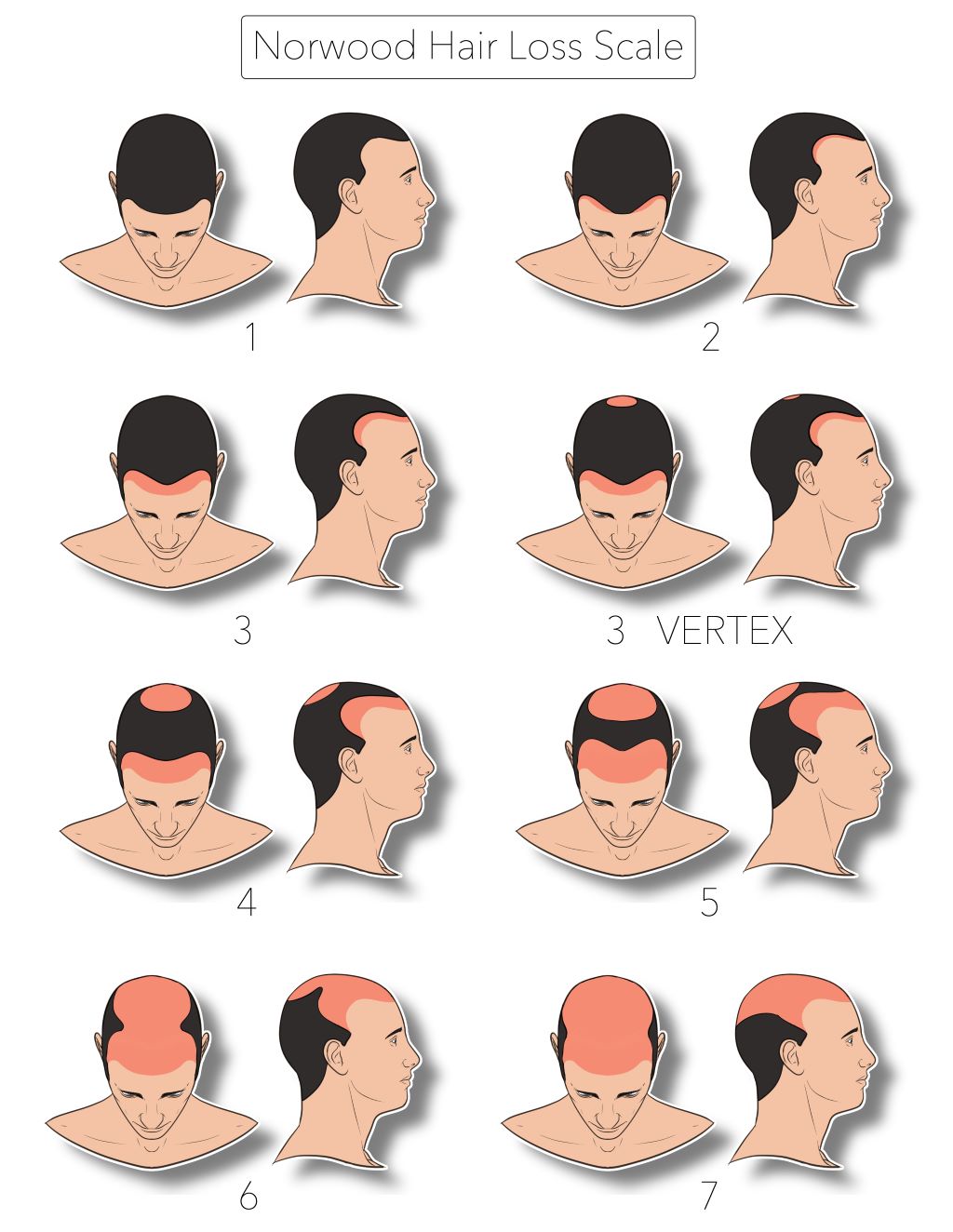
Norwood 2–3: Early recession at the temples or a slight M-shape. Typically 800 to 1,800 grafts. Ideal for a single-session front restoration.
Norwood 4: Hairline recession meets the thinning crown. Usually 2,000 to 3,000 grafts, with attention to mid-scalp density.
Norwood 5–6: Larger bald zones connecting front to back. Around 3,000 to 4,500+ grafts are needed, often performed in two stages. Donor management becomes critical here.
Norwood 7: Only a thin horseshoe of hair remains. Usually limited to 2,000–3,000 usable grafts, so full restoration isn’t realistic, surgeons focus on balanced, conservative design.
Dr. Ahmet Murat (Hermest Hair Clinic):
“Norwood 5 isn’t just a number. It’s your cue that hair restoration becomes lifelong management, not a one-time fix.”
The Ludwig Scale (Women)
Women typically don’t go bald in the same pattern. Hair thins gradually, often starting with a widening part and mild crown loss.
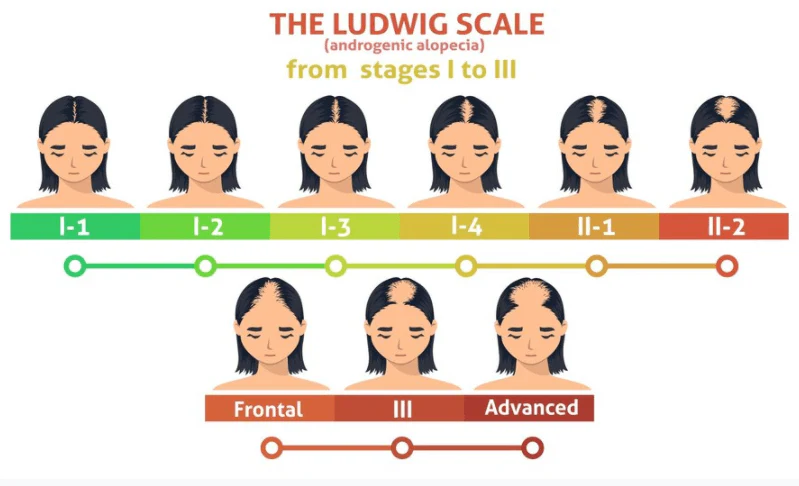
Ludwig Type I: Mild thinning along the central part. Usually 600 to 1,200 grafts are enough for early correction.
Ludwig Type II: Noticeable reduction in density, especially near the crown. Around 1,200 to 1,800 grafts may be used, sometimes paired with PRP or mesotherapy to strengthen native hair.
Ludwig Type III: Advanced diffuse thinning across the top. About 1,800 to 2,200+ grafts, often combined with hormonal or nutritional support.
According to the Cleveland Clinic (2024), women benefit most from smaller, targeted sessions that increase fullness without overloading the donor zone, long-term success depends on steady hormones and scalp health.
Dr. Güncel Öztürk (HairNeva Clinic):
“For women, 1,000 well-placed grafts can make a bigger difference than 3,000 done without precision.”
Why Pattern Is Important
Patterns aren’t just labels, they predict the future. Surgeons use them to anticipate how your hair will thin years from now and plan donor use accordingly.
According to ISHRS long-term data (2023), patients who choose staged, realistic restoration plans report far higher satisfaction after 10 years than those who go for “maximum grafts” in one sitting.
What Changes Your Number
Two people can walk into the same clinic with the same hair loss pattern and leave with totally different graft numbers. Why? Because your scalp isn’t a spreadsheet. It’s a mix of biology, texture, color, and future risk.
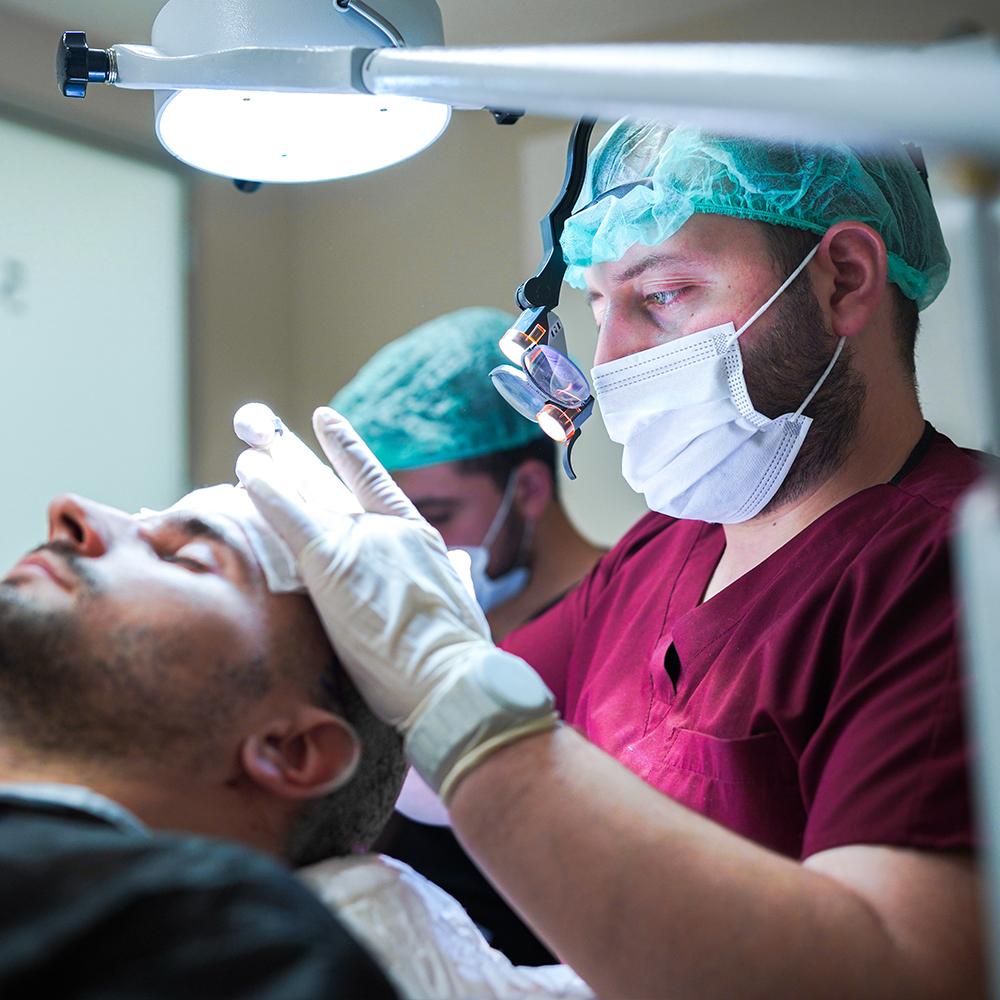
According to the International Society of Hair Restoration Surgery (ISHRS, 2024), graft count depends on at least six major factors, and half of them have nothing to do with how bald you look today.
Hair Caliber and Curl
Thicker hair gives more coverage per graft. Curly or wavy strands act like natural volume boosters because they cast shadows on the scalp. If your hair is fine and straight, you’ll likely need 15–25% more grafts to achieve the same visual density as someone with coarser hair.
Dr. Gökhan Bilgin (Smile Hair Clinic):
“Hair is architecture. A single coarse graft can hide what three fine ones can’t.”
Hair-to-Skin Contrast
Dark hair against light skin exaggerates thinning. The opposite combination hides it better. Surgeons adjust density targets based on this contrast, often increasing graft numbers by a few hundred to balance tone and coverage.
Donor Density and Scalp Laxity
Your donor area sets the limits. If it’s dense, you’ll have more grafts available (4,000–6,500 on average). But if it’s sparse, your plan might need to focus on key zones rather than full restoration. According to Bernstein Medical, donor overharvesting (more than 40% lifetime extraction) risks visible thinning at the back.
Dr. Ahmet Murat (Hermest Hair Clinic):
“A safe donor is your retirement fund, take too much now, and you’ll regret it later.”
Scalp Health and Circulation
Healthy scalps grow stronger hair. Conditions like dandruff, seborrheic dermatitis, or poor circulation can lower graft survival. According to a PubMed review, inflammation can reduce follicular survival rates by up to 20%. That’s why pre-surgery scalp prep, exfoliation, medicated shampoos, PRP, is more important than people think.
Age and Hormonal Stability
Younger patients often lose more hair later, so surgeons must plan conservatively.
A 25-year-old Norwood 3 shouldn’t max out their grafts on the front, they’ll need reserves for the crown later.
Women with hormone-related thinning (like PCOS or menopause) may also require ongoing maintenance with minoxidil or spironolactone.
Surgical Technique and Surgeon Skill
FUE and DHI all use DHT-resistant grafts, but extraction angles, punch size, and implantation speed change survival rates.
According to the ISHRS and Cleveland Clinic, expert surgeons maintain 90–95% graft survival, while less experienced operators can drop below 80%. That difference equals hundreds of wasted grafts.
Dr. Güncel Öztürk (HairNeva Clinic):
“Most failed results aren’t from low graft counts. They’re from high graft waste.”
Safety First – Donor and Recipient Limits
This part rarely makes it into clinic ads, but it’s what separates lasting results from regret.
The most dangerous phrase in hair restoration is: “We can do 5,000 grafts in one session”.
Sure, you can. But should you? Probably not.
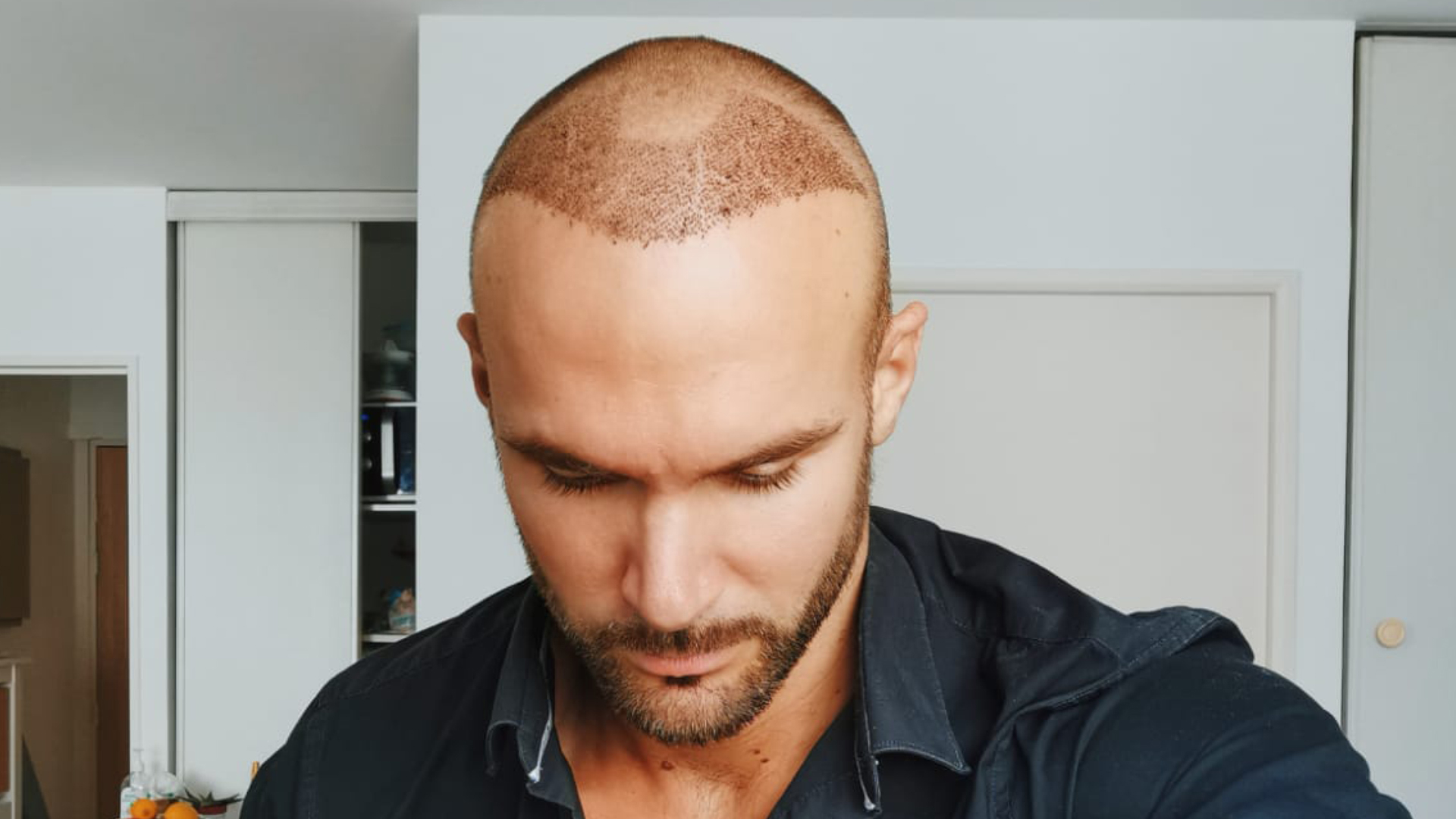
According to the ISHRS Guidelines, the donor area has a finite graft capacity, usually 4,000 to 6,500 grafts total in a lifetime. Safe harvesting removes no more than 10–15 grafts per cm², or roughly 40% of total donor density, to avoid visible thinning.
Why Overharvesting Hurts More Than It Helps
Overharvesting damages the “permanent zone”, the area genetically resistant to DHT. Once those follicles are gone, they don’t grow back, and they leave patchy scars that even future grafts can’t hide.
Dr. Ahmet Murat (Hermest Hair Clinic):
“Think of your donor as an inheritance, not an ATM. You can withdraw carefully, but you can’t refill it.”
A 2023 PubMed review confirmed that overharvesting reduces graft survival and worsens scalp elasticity over time, making second procedures riskier or even impossible.
Recipient Density Limits: Don’t Suffocate the Scalp
Just as you can take too many grafts from the back, you can also cram too many into the front. The recipient site needs healthy blood flow. Exceeding 55–60 grafts per cm² can restrict oxygen delivery and cause “necrosis”, a condition where transplanted tissue dies due to poor vascular supply.
According to ISHRS Forum (2023) case studies, these complications occur mostly in ultra-dense one-day surgeries.
Dr. Gökhan Bilgin (Smile Hair Clinic):
“A dense hairline on day one means nothing if half those grafts don’t survive day thirty.”
Good surgeons balance aesthetic density with vascular safety, spacing grafts to allow healing and oxygen exchange.
Safe Extraction Techniques: FUE, DHI, FUT
The technique doesn’t change biology, but it does change trauma.
- FUE: Minimal scarring, average safe limit of 3,000–4,000 grafts per session.
- DHI: Offers higher precision but slower extraction, ideal for smaller areas or women’s hairlines.
- FUT: Strip method allows dense graft yield but leaves a linear scar; best for patients needing large coverage in one go.
According to Bernstein Medical, combining FUT and FUE across separate sessions can safely increase lifetime graft availability up to 8,000+, but only when done years apart and under strict donor preservation protocols.
Dr. Güncel Öztürk (HairNeva Clinic):
“Surgery isn’t about how many you take, it’s about how well the scalp survives what you took.”
Cost, Sessions & When Touch-Ups Happen
Everyone asks about the price before they ask about planning, and that’s understandable. A hair transplant is both a medical and financial investment. But what many forget is that cost depends less on a flat rate and more on how many grafts you actually need, how your donor behaves, and how your hair evolves later.
According to the ISHRS, the total price varies by country, technique, and graft count. In Turkey, where expertise and volume keep costs competitive, the average hair transplant cost in Turkey ranges between 0.7 – 1.5 USD per graft, while clinics in the UK or US charge 2 – 6 USD per graft. So a 3,000-graft FUE might cost 2.100 – 4.500 USD in Istanbul but 8.000 – 15.000 USD abroad.
Typical Session Ranges
Most full hair transplants happen in one or two sessions, depending on the donor’s strength and the area needing coverage.
- Small procedures (hairline or temples): 1,000–1,800 grafts, often finished in one day.
- Mid-range cases (Norwood 4–5): 2,500–3,500 grafts, usually one long day or split into two.
- Large coverage (Norwood 6–7): 4,000–4,500 + grafts, often divided into two stages to protect scalp vascularity.
According to Bernstein Medical, dividing high-density work into multiple sessions improves graft survival by 15–20 %, giving the skin time to recover between extractions.
Why Touch-Ups Are Normal
Even perfect transplants age. Native hair keeps thinning, hormones shift, and minor density gaps appear. That’s where a touch-up session typically 500–1,000 grafts comes in. These mini-procedures refresh the hairline, add volume to the crown, or refine previous angles. Most patients schedule them 5–8 years after the first surgery.
According to ISHRS ten-year retrospective data (2023), patients who plan for these small refinements early are twice as likely to maintain stable, natural-looking results long term.
Dr. Gökhan Bilgin (Smile Hair Clinic):
“Hair transplants aren’t one-and-done, they’re long partnerships between surgeon and patient.”
Financing & Value Over Time
When you divide cost by lifespan, the numbers tell a different story. A high-quality transplant lasting 20 years averages out to less than 200 USD a year for confidence that doesn’t wash off in the morning.
Important Questions & Answers
How many hair grafts do I need for a full head?
Most people need 3,000 – 4,500 grafts for full coverage. According to the International Society of Hair Restoration Surgery (ISHRS, 2024), this depends on scalp size, hair calibre, and donor capacity, not just how bald you look today.
How many grafts for a receding hairline?
A typical hairline restoration takes 800 – 1,800 grafts, depending on width and density goals. Smaller temples may use as few as 300.
What about the crown?
Crown restorations usually require 1,500 – 2,500 grafts. The whorl pattern needs extra density to appear even, which is why some clinics stage this area over two sessions.
Can I get 5,000 grafts in one day?
Technically yes, but it’s risky. The ISHRS FUE Guidelines warn that exceeding 10 – 15 extractions per cm² from the donor or 60 grafts/cm² in the recipient can reduce survival and cause long-term thinning.
How many hairs are in one graft?
Each graft (or follicular unit) naturally holds 1–4 hairs. So 3,000 grafts could mean 7,000–9,000 hairs, depending on your hair type.
Is a bigger number always better?
No. Quality beats quantity. Overharvesting damages the donor and limits future procedures.
Do men and women need the same number of grafts?
Usually not. Women tend to have diffuse thinning and need 800 – 2,000 strategically placed grafts, while men often need 3,000 + for pattern baldness coverage.
Can I run out of donor hair?
Yes, if too many grafts are taken. Donor areas safely yield about 4,000 – 6,500 grafts total across your lifetime, according to Bernstein Medical.
Do transplanted hairs keep growing forever?
They should. They’re taken from DHT-resistant zones, meaning they’re genetically programmed to last for decades. But native hair around them can still thin, which is why maintenance matters.
How soon will I know if I need a second session?
Most patients reassess after 12 – 18 months. Once density stabilizes, your surgeon can tell if another small procedure (usually 500–1,000 grafts) would enhance balance or coverage.
Statistics & Trends
- The average donor capacity for a healthy person is estimated at 4,000–6,500 grafts lifetime, according to the International Society of Hair Restoration Surgery (ISHRS).
- Many clinics worldwide report that “full scalp” transplant cases involve 3,000–4,500 grafts when addressing both hairline and crown.
- According to ISHRS guidelines, safe FUE excision density from the donor area is about 10–15 grafts/cm² to avoid visible donor thinning.
- Recipient site density above 60 grafts/cm² significantly increases risk of graft failure due to impaired circulation.
- A 2023 retrospective study published via PubMed found that graft survival rates drop by as much as 15–20% when donor zones show prior miniaturization.
- Reports from Turkish hair-transplant clinics indicate that more than 55% of international patients now opt for DHI technique for precision, up from ~40% in 2020.
- The global hair-transplant market size was valued at over US $7.2 billion in 2024, with graft counts and international travel rising together.
- Surveys show that among patients who later required a “touch-up” session, the majority did so after 5–8 years, typically adding 500–1,000 grafts.
- Female hair-transplant cases now account for ≈18% of total procedures in major clinics in Turkey, according to a 2024 ISHRS regional report.
- Clinics that integrate post-surgery medication (finasteride/minoxidil) report higher long-term graft survival (90–95%) compared to those relying on surgery alone (80–85%).
Glossary of Terms
Graft
A small cluster of 1–4 hairs (a follicular unit) that’s removed from the donor area and transplanted into thinning regions.
Follicular Unit Extraction (FUE)
A common transplant method where grafts are taken one by one using a micro punch, leaving tiny dot scars instead of a strip.
Direct Hair Implantation (DHI)
A newer technique using a Choi implanter pen to place grafts directly without pre-made channels, allowing faster recovery and precise angles.
Follicular Unit Transplantation (FUT)
Also known as the strip method. A thin strip of scalp is removed, and grafts are dissected under a microscope. It yields many grafts but leaves a linear scar.
Donor Area
The safe zone (usually the back and sides of the scalp) where hair follicles are genetically resistant to DHT and stay permanent after transplantation.
Recipient Area
The balding or thinning region where grafts are implanted such as the hairline, mid-scalp, or crown.
Density (grafts/cm²)
The number of grafts placed per square centimeter. Natural density is around 70–100 grafts/cm²; transplants usually target 30–45 for a natural look.
DHT (Dihydrotestosterone)
The hormone responsible for pattern baldness in both men and women. Donor hairs are naturally resistant to it.
Overharvesting
Taking too many grafts from the donor area, leading to visible thinning or patchiness at the back of the head.
Norwood Scale
A grading system used to classify male pattern baldness (from stage 1 to 7).
Ludwig Scale
The equivalent system for female hair loss, describing diffuse thinning patterns from mild (Type I) to advanced (Type III).
PRP (Platelet-Rich Plasma)
A scalp treatment using a patient’s own blood plasma to stimulate healing and strengthen hair growth.
Shock Loss
Temporary shedding of transplanted or native hair within the first few weeks after surgery. It usually grows back.
Graft Survival Rate
The percentage of transplanted follicles that successfully grow permanent new hairs, that is ideally 90–95% under expert care.
Overpacking
Implanting grafts too densely (over 60 grafts/cm²), which can damage blood flow and reduce survival rates.
References
- International Society of Hair Restoration Surgery (ISHRS). FUE Clinical Practice Guidelines. 2024.
- ISHRS Forum. Ten-Year Retrospective Data on Graft Survival and Density. 2023.
- Bernstein Medical. Understanding Graft Numbers & Donor Capacity.
- Wimpole Clinic. How Many Grafts Do You Need?
- PubMed / NCBI. Hair Transplant Practice Guidelines and Safe Harvesting Thresholds. 2023.
- Cleveland Clinic. Hair Transplant: Procedure, Recovery & Longevity. 2024.
- PubMed / NCBI. Factors Affecting Follicular Graft Survival. 2023.
- Healthline. Hair Transplant: What to Expect Before and After. 2024.
- Cleveland Clinic. Female Pattern Hair Loss Treatment and Maintenance. 2024.
- ISHRS. Maximizing Donor Area & Safe Extraction Principles. 2024.